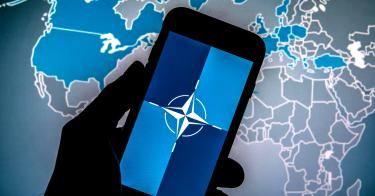Even as the battle between Russia and Ukraine continues, it’s not too soon for the U.S. and its allies to ask a basic question: Where do we go from here?
The transatlantic community has learned some hard lessons in the last few days. We need to build on them.
Start with NATO. Let’s not forget that it’s a political-military alliance. It exists to defend NATO territory—and collective defense means nothing if the alliance can’t commit to defending every one of its members.
Regardless of the outcome of this conflict, as long as Putin’s in power, Russia is a threat. Further, NATO must also be prepared to protect against any spillover of problems coming out of the Middle East, including troubles cooked up by an aggressive Iran.
>>> China’s Growing Influence Should Concern You
Then there’s China. As bad as Putin is, the Chinese Communist Party remains the most destabilizing danger on the planet. Beijing and Moscow are two sides of the same problem. Putin, in fact, is a stalking horse for the CCP. They both benefit from a divided, weakened, and distracted Europe and an isolated America.
The CCP fears nothing more than a secure transatlantic community. Putin has the power to do China’s dirty work for Beijing. We have to take that power out of his hands.
Putin can threaten us for two reasons: 1) He can threaten us with his military. 2) He can blackmail Europe over energy. Take those two weapons out Putin’s hands, and Russia becomes a nuisance power.
Putting responsible energy policies in place can’t be done in a New York minute. It’s going to take some real work. The U.S. addiction to "climate action" is still a big barrier to responsible action. But on the defense front, there is more cause for optimism.
Look at how Germany has responded, albeit not as soon as they should have. It immediately signaled a commitment to reach the agreed-upon NATO goal of spending at least 2% of its GDP on defense, promptly decided to field the F-35 fighter aircraft. That demonstrates that Europeans are willing to step up and do their part. Trump may have primed the pump, but it took Putin’s aggression to get it flowing.
Europe doing more, however, doesn’t mean there is less for the U.S. to do. NATO as a whole has slipped in its capacity to ensure an adequate defense of alliance territory. So there is a clear to-do list for the U.S. as well.
Three members of NATO have nuclear weapons: the United Kingdom, France, and the U.S. Their arsenals need to be modernized and proven ready to the task of extending nuclear deterrence to every inch of NATO soil—against all comers. NATO also needs missile defense to match. The best and most stable strategic defense is a robust mix of offensive and defensive missile and bomber capabilities.
Yet NATO cannot be defended without boots on the ground, which offer conventional deterrence to complement strategic deterrence. We need to think way past having U.S. troops forward deployed to serve as a "tripwire." We need U.S. troops that can show we are ready to fight and kill an invading enemy.
In addition to having a forward-deployed American corps headquarters, there should be a U.S. heavy division stationed in Poland and a U.S. heavy brigade stationed in Romania. This would be about 10,000 troops, mostly not new troops, but keeping them in Europe instead of rotating them in and out, which is both more responsive and more cost-effective.
>>> Russian Nuclear Exercise a Reminder That Nuclear Deterrence Isn’t Relic of Past
We also need a lot more air-defense capability forward-deployed. Troops on the ground are of no use if they can be pummeled from the air by planes, missiles, and drones. We also need to get our air arm right. The Trump administration started to consolidate the inefficiently scattered U.S. air footprint in Europe. It is time to do more. The U.S. should place an Air Force wing in Europe.
We have work to do at sea, too. Naval forces can move fast. They are powerful and flexible. They can be a force deployed now to deter Putin. Assets should be positioned as soon as possible at two strategic pressure points: the Baltic Sea and Barents Sea.
To coerce Ukraine, Russia has weakened its naval presence in both places. Sending in naval forces would definitely get their attention. In the long term, U.S. and NATO need a better plan for sustained deterrence in the Baltic, as well as the Black Sea.
If these steps are taken, we will show that our leaders have learned the lesson of the tragedy in Ukraine. If they are not, then, regardless of the outcome of the Ukraine conflict, we will be more at risk than ever.
This piece originally appeared in Fox News




